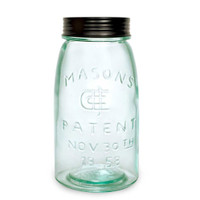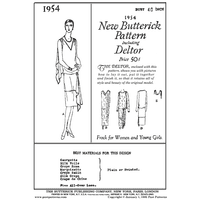 Loading... Please wait...
Loading... Please wait...Categories
Add to Wish List
New Products
- Home
- Historic Patterns
- Women's
- 1820-1860
- Blue Silk Crepe Gown c. 1818 - 1820
Product Description
Elaborate hem decorations seen in fashion plates of the late teens get a modest nod in these three graduated bias-cut satin bands. The cap sleeves at the shoulder and fashionably extra-long sleeves are trimmed with tripple bands of satin to echo the skirt. The overall effect is subtle, relying on the contrast of texture between the shiny satin and the crinkled crepe (spelled “crape” in the period). A white chemisette fills in the low neckline, although without it the dress would have been appropriate for dinner or other evening events.
The dress’s color, may have been the trendsetting new “Clarence Blue” named in 1818 for the Adelaide of Saxe-Meiningen, who arrived in England in July 1818 to marry George III’s son William, the Duke of Clarence. Adelaide set a style for this shade of blue, apparently her favorite color.
FIT:
The very high period waist is higher than what a woman in the 21st century would wear and cannot be easily achieved without some form of corsetry. This dress would have been worn over a chemise, corset, and with at least one petticoat.
FABRIC:
The original fabric is a light silk crepe with a soft drape. The pattern works well in various weights of cotton and silks.
CHOOSING SIZE:
When deciding which size is correct for you to use, measure your rib cage under your bust, preferably with your corset and underpinnings on. This is the single most important measurement. This waistband has 1” ease and is meant to fit snugly to your body. Since the cross over front is gathered and tied with drawstrings, it can accommodate a variety of bosoms.
Sizes 8 - 18 or 18 - 28










